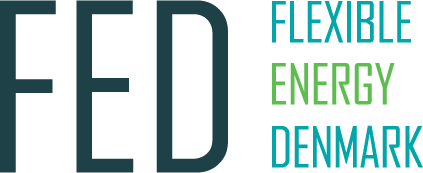Published 09. Sep. 2022
Data helps us save energy
By Hanne Kokkegård, DTU
Behavioural changes, digital solutions and the liberation of data can help Denmark reach its climate goal and get through the current energy crisis more easily – and at the same time save on expensive investments in the power grid. At the Danish People’s Climate Meeting (Klimafolkemødet), the FED project explained the role of data and flexibility.
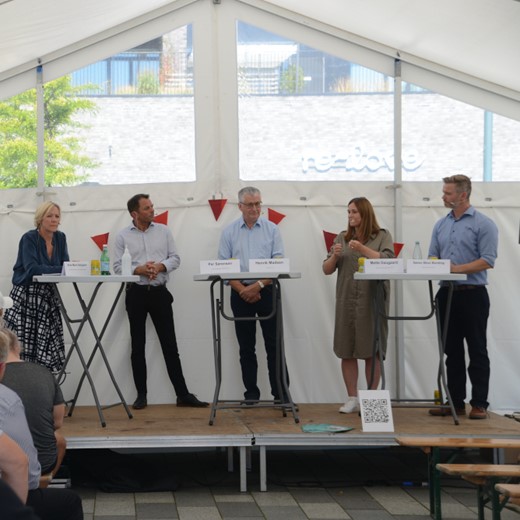
There was a reality before February 24 – and a reality after. When the war in Ukraine broke out, energy prices increased markedly in Europe, and many countries – including Denmark – are right now presenting energy-savings schemes for how to get through the winter without the use of Russian gas: Lower the temperature to 19 degrees in public buildings, shorten the heating season, limit outdoor lighting, save on energy in general.
At the time of writing, the price for one kWh is at around DKK 4 including transport and duties, and it has been as high as DKK 8. In other words, there is a lot of money to save on being flexible, especially if you have a heat pump or electric vehicle – but also on dishwashing, laundry and lighting. And people are interested. According to Green Power Denmark, apps showing the current electricity price in Denmark are at the top of the charts. It is a necessary and at the same time excellent point of departure for Denmark, because we need a comprehensive change in behaviour, and in this connection, data and the visualization of data play a crucial role.
At the People’s Climate Meeting in Middelfart, four of the partners in the Flexible Energy Denmark project debated how we can use digital solutions to utilize green energy optimally, and at the same time reduce the need for expansions of the existing infrastructure in the power grid. The project has developed solutions that can contribute to Denmark saving DKK 31 billion and help reach the climate goal of a 70 percent reduction in 2030.
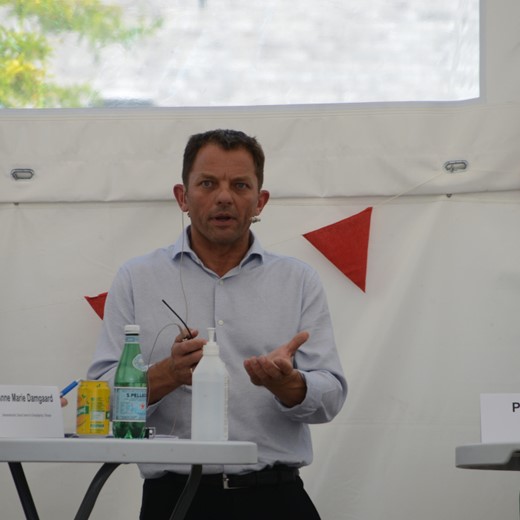
TREFOR and EWII: Real-time data needed
As the infrastructure of the power grid derives from a time before electrical vehicles and heat pumps were even thought of, it will be necessary with a certain degree of expansion of the power grid, but data can make this expansion much cheaper because we will be bringing flexibility into play, Per Sørensen, Director of Electricity Supply in TREFOR and CEO of TREFOR-El-net & El-net Øst explains:
- We come from a system in which the production of electricity has been adapting to the consumption of electricity. Now, we are moving into a situation in which our consumption needs to adapt to the electricity production with sustainable energy from sun and wind that changes over days and seasons. If everything is to come together, society at large need to change its behaviour. We need to consume power when it is produced. Power can be stored, but that is expensive. So we need to bring more things into play – and in this, data is a central element.
A big issue for grid companies is that today, they do not get external real-time information on the power grid that they are trying to run.
- Of course, the better chance we have of being on top of what is going on in the grid – and in the entire energy system – at this exact moment, the better chance we have of optimizing it. In this connection, real-time data will enable us to identify the areas where flexibility can be created. Establishing a joint data collection across the entire energy system is a huge task. But we need to do that in the future, Per Sørensen says.
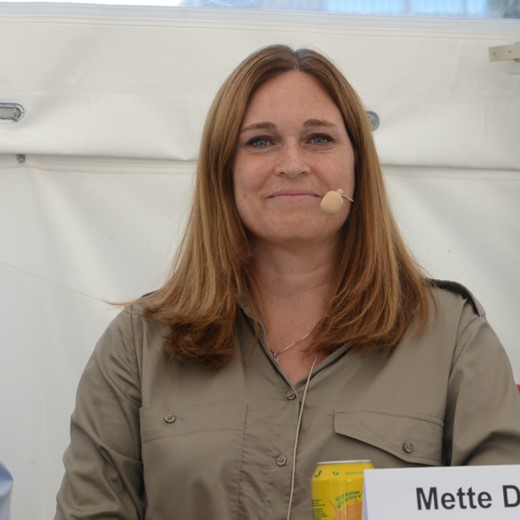
The need for real-time data is a point that multi-supply company EWII A/S knows well. Like other electricity suppliers, EWII helps its customers visualise data, enabling customers to log into their own account to see their energy consumption. EWII works on developing new digital self-service solutions where the aim is to nudge people to consume energy at those times when it benefits the green transition and the balance in the energy system. One example is comparing their consumption with other families or getting notifications on important issues.
- This means that data is a key player, but since data today can be as much as five days old, or the energy consumption is not broken down over the 24 hours of the day, but only on a daily basis, you cannot act super intelligently on it. We want a solution where people can see at once how much a shower cost, Director of Marketing and Communication in EWII A/S, Mette Daugård says.
She emphasizes that customers will only benefit financially from consuming power at the times when it is cheapest if they have a contract that facilitates this – that is, variable pricing and not fixed price.
However, EWII is quite confident about the future:
- The greenest and cheapest energy is the one that you do not consume. Over the last six months, Danes have saved 9 percent on electricity compared to the year before, so there is really something to gain by saving. We see an increasing tendency that people explore their own power consumption. People turn off standby consumption, video surveillance, etc. People are interested in seeing where they can move things around, Mette Daugård says.
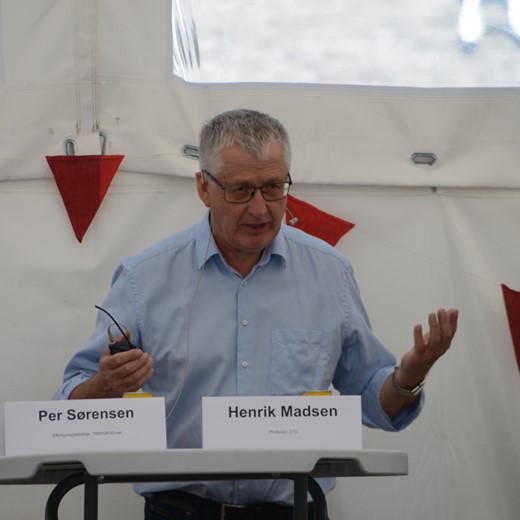
DTU Compute: We feel an increased focus on flexibility
Real-time data is high on the agenda in FED where we use different types of living labs to test solutions. One such is in Høje-Taastrup Municipality where we move the energy consumption of the district heating in schools. Another is cooling facilities at Aarhus Harbour where we freeze goods that can withstand it to a lower temperature when there is a surplus of green power but turn the power off when the energy comes from fossil fuels. A third example is vacation houses in Blåvand where we ‘store’ surplus energy from wind turbines by heating up swimming pools a couple of extra degrees.
At DTU, the researchers are developing mathematical models on the basis of data from our living labs for use in the digital tools that will make it easier to utilize the green energy, Henrik Madsen, Professor at DTU Compute, explains:
- When we have a clear picture of the data and get them in real time, we can develop tools that can utilize the flexibility. It is fairly simple techniques, but we need to learn to utilize it in different places – at private homes, at the wastewater treatment plant, in the supermarket, and so on. We can see that it will result in a huge financial saving when we collaborate on turning the energy system upside down.
According to the professor, the market is starting to see automatic solutions that can utilize real-time data so that the consumers do not need to keep an eye on the energy prices themselves, and the interest in being flexible has grown markedly.
- The war in Ukraine is a horrible situation, but the energy crisis and the high prices mean that people now come to us wanting this kind of solutions. So it benefits the green transition.
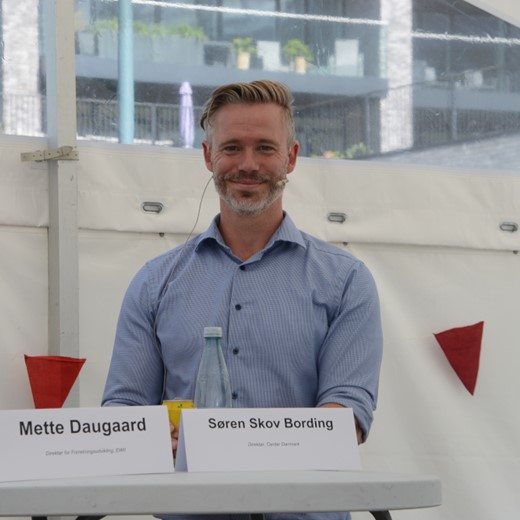
Flexibility must come into play in the EU
Real-time data is right around the corner. Data streams from the six living labs in the Flexible Energy Denmark project flow in and out of Center Denmark, a digital hub for energy data that collects data across the entire energy system. Already today, some data arrive on the basis of seconds.
The strength of Center Denmark’s so-called data lake is that they gather data across different types of supply and standardise data within power, district heating and water, enabling the use of them across the energy system to generate flexibility and utilize new digital tools or services.
At the same time, Center Denmark and Flexible Energy Denmark look to Europe and participate in the negotiations that are right now happening on how to standardise energy data across national borders in terms of the so-called data spaces that will ease the exchange of data – including real-time data that can also bring flexibility into play at a higher level in general in the EU.
- We are sitting at the EU table in order to provide input to the future data spaces, because we will not be seeing one major common platform that contains everything. We will see a lot of different platforms that will have to learn to communicate. If we are to support Danish industry and Danish companies, we must be part of this, because then when we develop new business solutions on Danish soil, they will be scalable on European soil and as such exportable to other countries, CEO of Center Denmark, Søren Skov Bording, says.
